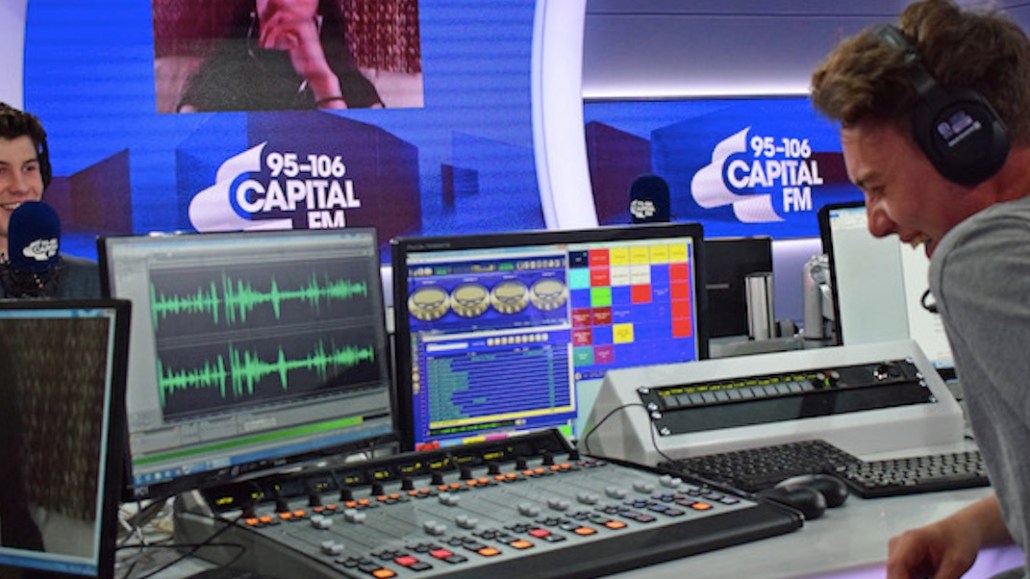Register by Jan 13 to save on passes and connect with marketers from Uber, Bose and more

Global, home to radio stations like Capital, Heart and Classic FM, has tuned into the revenue opportunities of video, and it’s paying off.
The video team has grown from six to 25 staffers, bringing on board former producers from the BBC and YouTube. In the past, each radio station’s website would mostly feature music videos. Now, each month, across brands, Global’s video team creates up to 600 original videos. Music features heavily: Recent videos on Capital FM, the company’s most popular brand covering chart music, include former One Direction member Liam Payne’s debut live solo performance at Capital FM’s summer ball and the band Rudimental discussing an upcoming V Festival performance. Elsewhere, Classic FM features a youth classical ensemble playing the “Game of Thrones” soundtrack, while rock station Radio X features a 40-minute interview with former Oasis lead singer Liam Gallagher.
Videos are also edited for platforms. Videos from current-affairs talk station LBC have particularly taken off on Facebook in the last year. LBC’s videos had 18.3 million video views on Facebook in May (which has since dropped to just over 7 million in July), according to Tubular Labs. The video team sifts through 160 hours of talk radio a week and turns less than 1 percent of it into two-minute videos of a presenter talking to a guest or caller. For example, presenter James O’Brien’s monologue last October comparing British Home Secretary Amber Rudd’s Tory conference speech to Adolf Hitler’s autobiography “Mein Kampf” was viewed over 3.9 million times on LBC’s Facebook page and got over 60,000 shares.
Growing reach on platforms only goes so far, though. “I wouldn’t be building my commercial strategy around revenue delivered by other platforms,” said Oliver Deane, Global’s commercial digital director. “It’s about defining what social plays in your business; large amounts of views on social platforms, while there’s no direct significant monetization opportunity as there is on your own platform, [are] still growing the brand.”
On-platform, these videos generate around 40 million monthly, 30-second non-skippable pre-roll impressions on Global’s sites, via Ooyala’s video player, said Deane.
Growing enough scale to deliver an advertiser millions of impressions per campaign is one part; the other is maintaining above industry averages in metrics. Eighty percent of Global’s ad impressions are viewed to the end, said Deane, adding that most agencies on average are looking for a 70 percent minimum view-through rate.
Listeners are likelier in the radio medium to have the sound on, too, ultimately adding to the quality of the message during a time when plenty of campaigns are viewed in social feeds with the sound off.
“If someone is loading the Capital FM app, they are going to be listening to music, so [they will] have the sound on,” said Deane. “That pre-roll delivers a sound-on experience, so we’re seeing a big uptake in advertisers buying that inventory.” (Capital FM’s in-app pre-roll ads are skippable after five seconds.)
The other side of the coin is the video content brands pay for. In 2014, Global ran about 30 video campaigns that brands paid for; last year, this increased to 200. A campaign for Barclays educating millennials on online safety and fraud had 1 million views on Capital FM’s site, according to Deane.
Image courtesy of Global.
More in Future of TV

Future of TV Briefing: 5 ripple effects that will shape the future of TV in 2026
This week’s Future of TV Briefing looks at the trends and developments that will shape the TV, streaming and digital video industry in 2026.

‘A year of loose ends’: Digiday editors share top takeaways from 2025
This year was filled with major developments – from Netflix’s planned WBD deal to Omnicom’s acquisition of IPG to Google’s ultimately cookie reversal – and Digiday editors Sara Jerde and Seb Joseph help to recap the year that was (and wasn’t).

Future of TV Briefing: How the future of TV shaped up in 2025
This week’s Future of TV Briefing looks back at the top topics and trends that overtook the TV, streaming and digital video industries in 2025.





